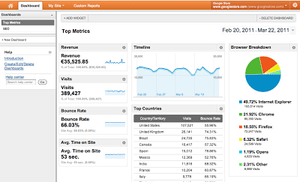We have talked about how important measuring your results are for your marketing campaign, and today we are going to talk about how to measure the success (or failure) of your Yelp page.
In order to measure how much web traffic and how many phone calls Yelp drives to your practice, you’ll need to create a unique landing page and purchase a second phone number.
You can get a phone number that forwards to your office phone from a company called Call Rail. With Call Rail you get a local phone number, 500 minutes, and access to an analytics dashboard for $30 a month.
You can get a unique URL by either purchasing a new domain name or asking your webmaster to create a subdomain. On your new domain name, create a landing page and install Google Analytics.
On your Yelp page, change your domain name to your new domain name that will be unique to your Yelp campaign. Then, change the phone number to your new Call Rail number.
Now you’re ready to measure how many leads Yelp is sending your practice each month. Good luck.
What’s a landing page?
Also called a “lead capture page”, a landing page is a single web page designed to convert its visitors into sales leads.
Landing pages can be designed as a reference (informational) or to accept payments (transactional). Regardless, in comparison to the rest of your website, landing pages have a unique one-page design featuring a specific call to action.
A call to action is a banner, button, text, or graphic created in a way that prompts a visitor to click on it and perform a task.
Landing pages are usually search engine optimized (SEO) for a few keywords important to your industry in an attempt to enhance the page’s visibility by services like Google and Bing.
However, search engines are not the only source of traffic for landing pages. Landing pages are often linked to advertisements, social networks, and other industry specific websites.
Creating specific landing pages for all of your campaigns is valuable because it allows an advertiser to tailor her offers to different target audiences.
For example, dentists provide a service for everyone (males, females. adults, and children), but each demographic may be looking for something slightly different – whether that be the language you use, the design you choose, or the call to action you propose.



